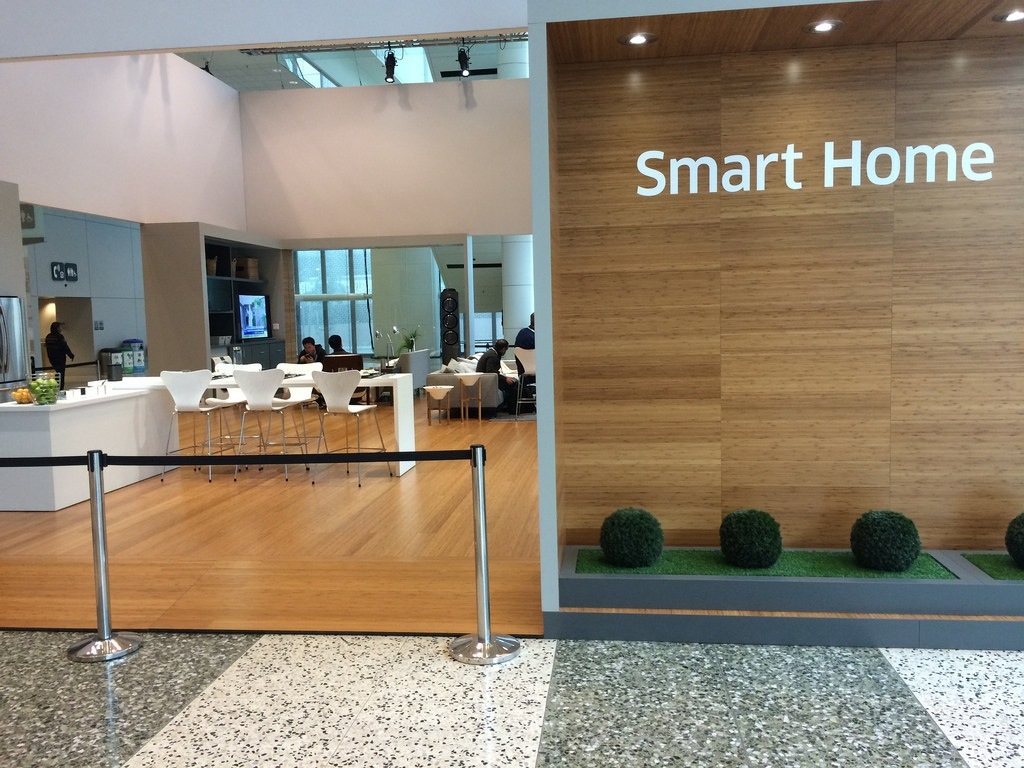Integrated Smart Home Management Systems

The name of the technology "smart home" in itself implies intelligent control of the room. A multitude of devices combined into one system ensure housing security, comfort and economy of resources. The system allows you to easily control the room temperature, lighting, alarms, security systems, etc.
The smart home control system is a set of hardware and software tools designed to perform three main functions.
')
The first is the management of various equipment of your house from one point. Using a smartphone, computer, tablet and other devices, you can control all the smart devices that your apartment is equipped with.
For example, you can turn on or off the light in any of the rooms or change its intensity, push or pull the curtains apart, turn the air conditioner on and off, change the temperature, control any functions of household appliances that have this capability, and also give commands to execute any scenarios .
Executing scripts is the second way to control your smart home. The scenario is a set of pre-agreed with the user programmed actions that the smart home system performs on command.
For example, when a user comes home after work and sits down to watch TV, he can send the “Watch a Movie” command to a smart home, then the complex will dim the lights, slide the blinds and automatically adjust the sound volume. It is necessary to add that commands can be carried out not only with the help of the touch panel, but also with the help of a PC or mobile phone.
The third item is the automatic control of the smart home. In this case, the system itself makes decisions about certain actions, for example, maintaining a constant room temperature, focusing on the thermometer. Similarly, you can control, for example, an electric sauna or watering plants.
There is an opinion that in order to fully extract all the benefits that a smart home is capable of providing, managing a smart building should be comprehensive. Recently, there has been a desire of customers to fully automate their housing engineering systems.
If earlier they mostly agreed to the installation of individual systems - only lighting and curtain control systems, only climate control systems, and so on, now the full range is increasingly being installed. However, the installation of complex automation systems requires the intervention of professionals, which is not always convenient. Moreover, this option of a smart home is quite expensive.
Perhaps it is for this reason that lately hubs have been used to control smart devices in the house. They serve as an excellent starting point for starting to create an integrated intellectual system. In fact, a hub is a central controller that controls many other devices at once, which are bought either immediately or gradually and are able to perform a variety of functions: from illumination control to security.
One of the most popular hubs is called SmartThings Hub. Management is carried out through applications on iOS and Android, as well as through a web interface.

Photo: smartthings.com
SmartThings offers several products that can be integrated with the hub: a leak sensor, a motion sensor, a door-opening sensor, as well as smart sockets, lamps, cameras, thermostats and many more. Moreover, it can integrate with devices developed by partner companies, such as Belkin WeMo switches.
Another hub on the market for smart devices was presented by Insteon. Management is also carried out using an application for a smartphone or computer.

Photo: insteon.com
With it, you can customize the behavior of devices depending on the time of day and receive e-mails with notifications (plus push notifications) when an event occurs. Insteon products include thermostats, sockets, switches, door locks, motion sensors, leakage sensors, wireless cameras and other devices.
Another affordable home automation system is VeraLite. Through the use of the Z-Wave protocol, it can "communicate" even with those products that do not belong to the VeraLite line. VeraLite is automatically configured when it connects to your home network. Moreover, it can function as a router.

Photo: getvera.com
However, such systems have one drawback. You can connect motion sensors with light switches, you can program the thermostat so that it warms only those rooms in which there are people, you can even turn on and off electrical sockets using your smartphone. However, this is only possible if you live permanently in this house. If you rent an apartment and move frequently, then transporting the equipment and re-installing it immediately turns into a tedious task.
This creates certain difficulties in the adaptation of smart home technology by young people who often travel. This problem is trying to solve the company IOTAS and its co-founder, Se Pike (Sce Pike). IOTAS works with development companies to bring smart technologies to every home. Its goal is to make tenants fully enjoy the possibilities of the Internet of Things.
The integrated IOTAS control system can work only with motion sensors, switches and sockets, however, using the company’s application, the user can create their own rules for the operation of apartment equipment. For example, IOTAS can turn off all the lights in the house after 10 pm, when you go to wash, or, on the contrary, blink light, if you receive an SMS message.
You can “transport” the smart home with you thanks to the cloud service. Moreover, you get access to the settings made by other users. The IOTAS hardware is wireless and is capable of working with ordinary light bulbs and switches.
Pike also says that the company wants to expand the range of devices available: introduce smart locks, thermostats, wearable devices. Complex solutions of this kind will allow customers to feel as free as possible and will be able to satisfy all their small whims. It is not surprising that companies such as Google are eager to make up the competition. But maybe this is good because competition is pushing the market forward.
Source: https://habr.com/ru/post/395393/
All Articles